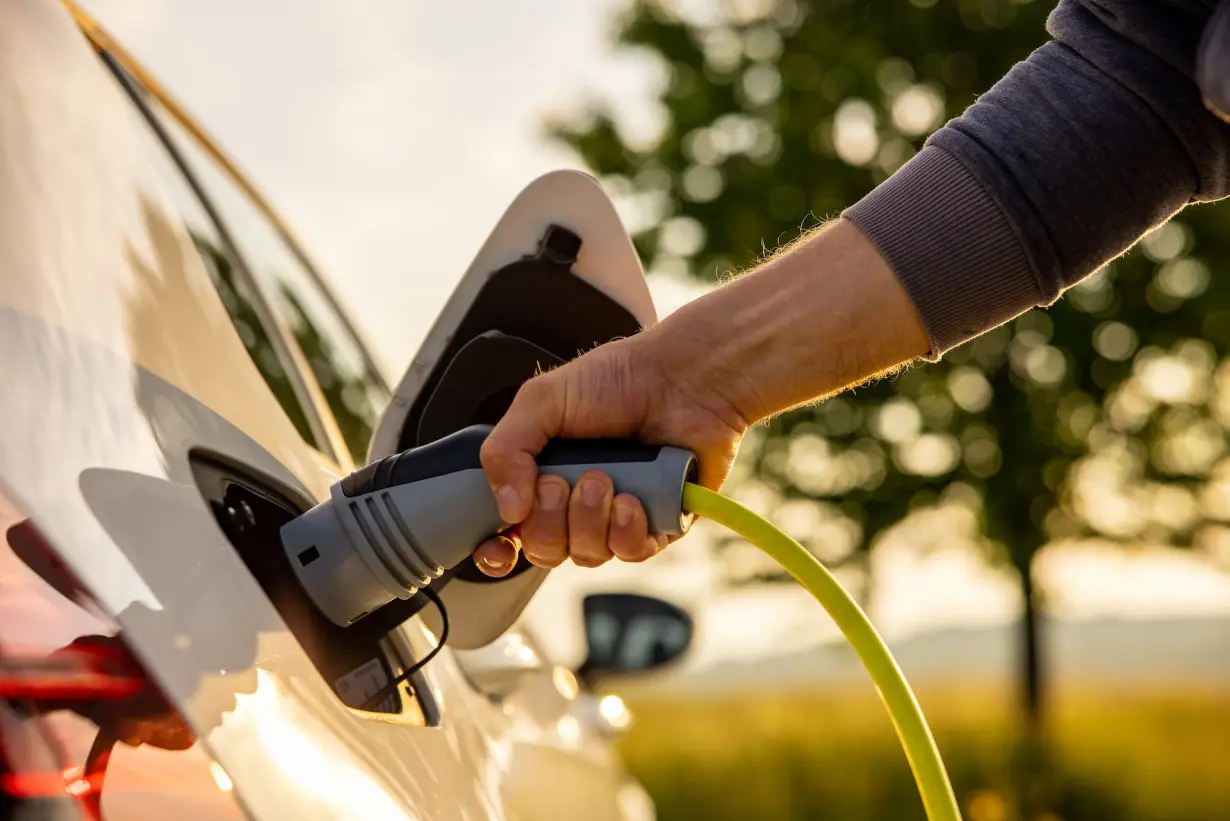In 2023, more than 7% of cars sold in the United States were electric vehicles. In some parts of the world, such as Norway, the percentage was a whopping 20%. In California, where I live, almost 60% of people looking for a car in 2021 said they would at least consider getting an EV.
This upswing in demand comes after years of flagging sales. As recently as 2010, fewer than 100,000 cars on U.S. roads were EVs. That number crossed the 1 million mark in 2018, up more than 80% over the prior year.
What explains this seemingly unexpected surge over the past few years?
The key word here is “seemingly.” And the answer reveals an interesting history that most people are completely unaware of.
I teach entrepreneurship at the USC Marshall School of Business, and I’ve been studying the EV market for more than a decade. When I ask students, “How long have EVs been commercially available?” most of them will answer five years, or 10, perhaps 20. One person might point to an EV launched by General Motors in the 1990s whose name they can’t seem to remember.
But occasionally, a precocious person – usually in the back row – will raise a hand and answer, “Since the early 1900s.”
That’s almost the right answer.
Electric vehicles and the long road to adoption
EVs are a new old technology. Most people don’t know that they’ve been commercially available since as far back as the 1890s. Back then, there was a fight over how best to power a car, or what business professors would call a battle for “dominant design.” The options were internal combustion engines, electric and – as unlikely as it sounds – steam. Yes, that’s how long it’s been since that battle was first fought.
Almost 40% of vehicles on the road in the early 1900s were electric. But after Henry Ford’s first Model T, which used an internal combustion engine, left the production line in 1908, they all but disappeared. EVs have been trying to make a comeback ever since. Like the precocious person in the back of my classroom knows, they’ve been the “next big thing” for more than 100 years.
So, what factors help explain why EVs lost the battle for dominant design back then – and why do they appear to have a fighting chance today?
The ‘cool factor’ − but so much more
Those who point to the Tesla Roadster as the first modern EV point to its reputation as fun, sporty and cool. And they’re right: The Tesla Roadster did make EVs cool – if expensive, at over US$100,000 dollars at its launch in 2008.
But there are many more factors that explain the rise in demand and, more importantly, broad adoption of EVs.
One reason for the rise in demand starting in about 2010 is better and more widely available charging infrastructure. In the U.S. in 2009, there were fewer than 500 public and private charging stations nationwide; today, there are more than 100 times as many. That has helped allay consumers’ “range anxiety,” that nagging fear that you’ll run out of “juice” before you can get to a charging station.
But many other factors are also at play: the right set of models and options made available by manufacturers, improved battery and charging technology and the right mix of government regulations and incentives. All have led to healthy consumer demand.
Technology adoption: It takes a village − and time
Apart from those technical and economic factors, current studies and my own ongoing research also suggest that the social conversation around EVs – what everyone in the world says and thinks about them – has also taken a turn for the better.
Technology adoption is influenced by what’s known as “peer effects” – the desire to compare oneself with others. That’s because people engage in “social comparison” by paying attention to what others like them are doing and, more importantly, how those other people might view their behavior. The same is true, for instance, of solar panel adoption, another technology that, like EVs, has both personal and social benefits.
As I noted earlier, the coolness factor has a positive impact on EV adoption. Driving a cool car matters because that coolness is visible. And when a car has been uncool for so long, a fundamental – and positive – change in its public perception can substantially affect demand and adoption.
My research and other studies suggest that a turning point may have come in the mid- to late 2010s, when both public attitudes and charging technology and infrastructure began to improve. It takes a village to birth a market.
The challenge of EV adoption is a reminder that many of our technologies aren’t just tools or devices – they’re ways of getting things done. Technology comes from the Greek word “techne,” which means a practice, a set of habits and a way to accomplish a goal.
Much of our technology, from early word processing software to today’s streaming services, depends on collective social behaviors and how they change – or, in many cases, don’t.
For example, the standard “qwerty” keyboard is not intuitive. But because it set the standard, it became the dominant design. It’s now too efficient, and too socially embedded, to allow for easy replacement.
New technologies can’t even look too different from what we’re used to or they would make it too hard for us to adopt them. That’s why EV charging plugs look like – you guessed it – gas pump nozzles.
In other words, cool technologies need to be in line with existing behaviors and customs, or they’ll have to travel a long road toward establishing new ones. Without this alignment, new tech will sit on a shelf for a long time but never succeed – like EVs almost did.
Hovig Tchalian does not work for, consult, own shares in or receive funding from any company or organization that would benefit from this article, and has disclosed no relevant affiliations beyond their academic appointment.
Source: The Conversation
































